Available 24/7
Available 24/7
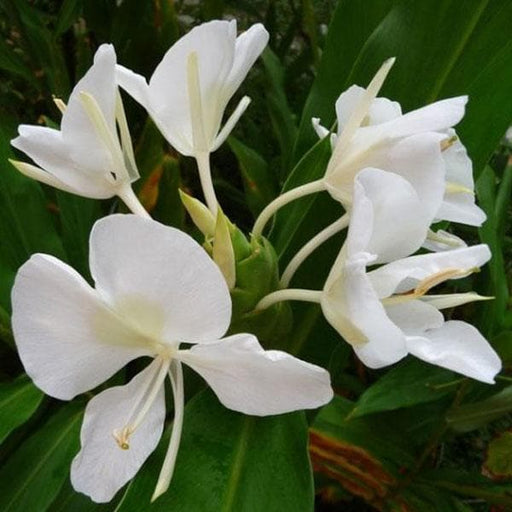 Save 13%
Save 13%
DescriptionThe white and scented species is Hedychium coronarium. It belongs to Zingiberaceae (Ginger) family. The plant blooms very profusely from...
View full details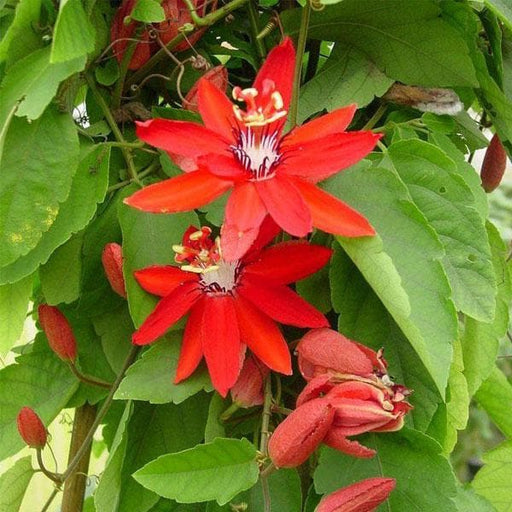 Save 14%
Save 14%
DescriptionPassion flowers are in the top ten of one of the most spectacular vines that could grace a garden. Passiflora vitifolia is a vine with c...
View full details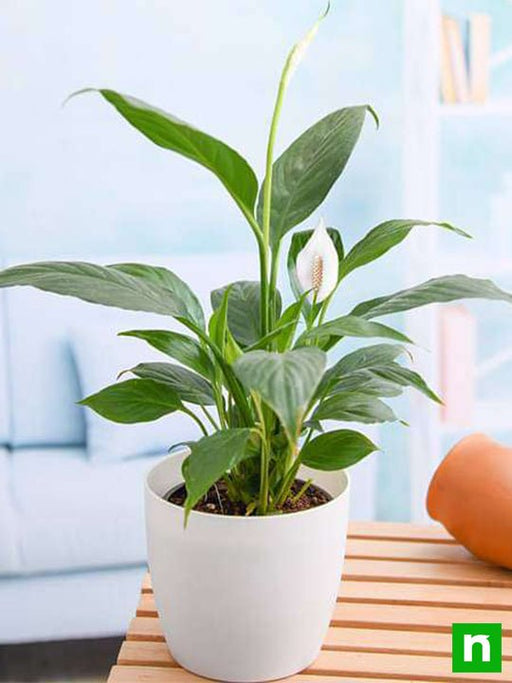
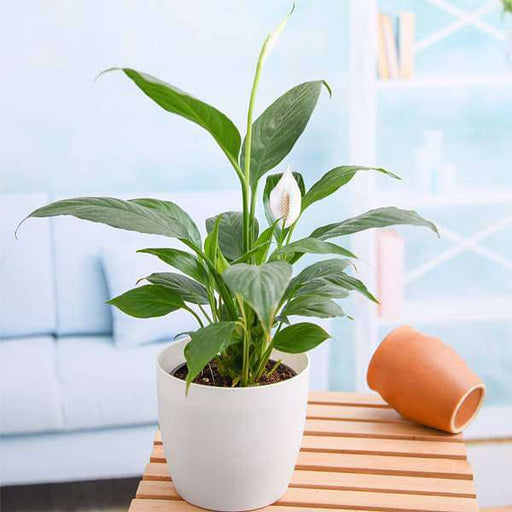 Save up to 15%
Save up to 15%
DescriptionPeace Lily Plant is a very popular and very rare indoor flowering houseplant. It is also an excellent air purifier plant.What makes it s...
View full details
 Save 20%
Save 20%
DescriptionFlowers make intimate connections they increase our connectivity with family and friends. Mogra plant is famously known as Jasmine flowe...
View full details
 Save 14%
Save 14%
DescriptionHave you ever stumbled upon a tree that made you stop and stare?A tree that seemed to possess a beauty so rare that it made you question...
View full details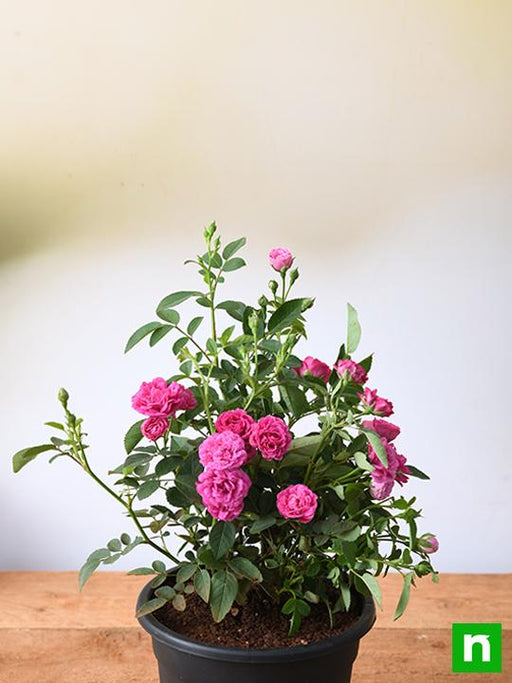
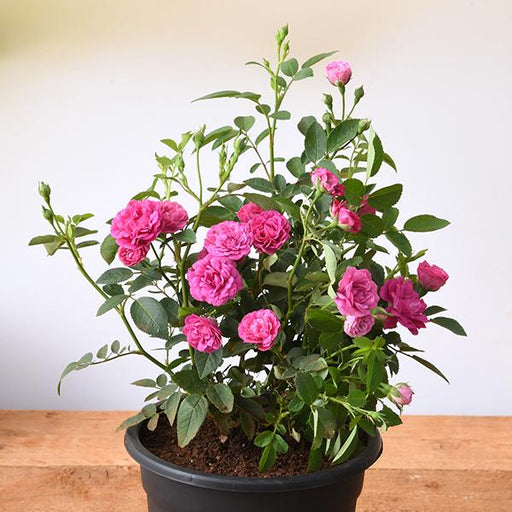 Save 14%
Save 14%
DescriptionButton Rose is a perennial flowering shrub plant. Roses are best ornamental plants.What makes it special: One of the best flowering plan...
View full details Save 20%
Save 20%
DescriptionDamascus roses are known for its distinct fragrance. Enjoy the real and oldest scent of rose. The Damascus rose is a deciduous shrub gr...
View full details Save 45%
Save 45%
Description Pack of 4 succulents that are very easy to care for. A perfect pack to start growing plants worry-free. About You get 4 succulent plant...
View full details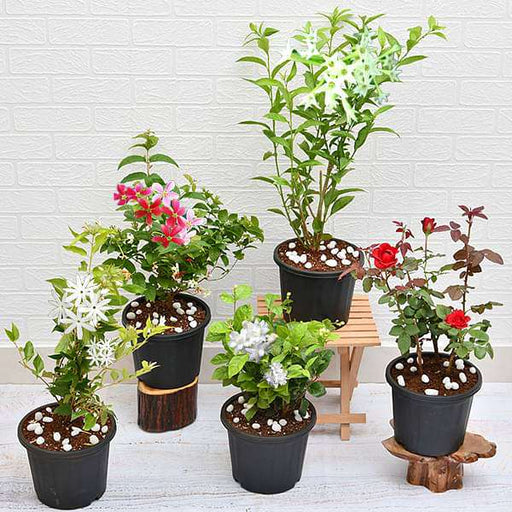 Save 12%
Save 12%
DescriptionAromatic plants bring into a room or house an often overlooked benefit. These plants have a pleasant scent.About You plant a hope when ...
View full details
 Save up to 50%
Save up to 50%
DescriptionIf you long for indoor greenery but have not succeeded with houseplants, consider these beautiful succulents. A perfect pack to start gr...
View full details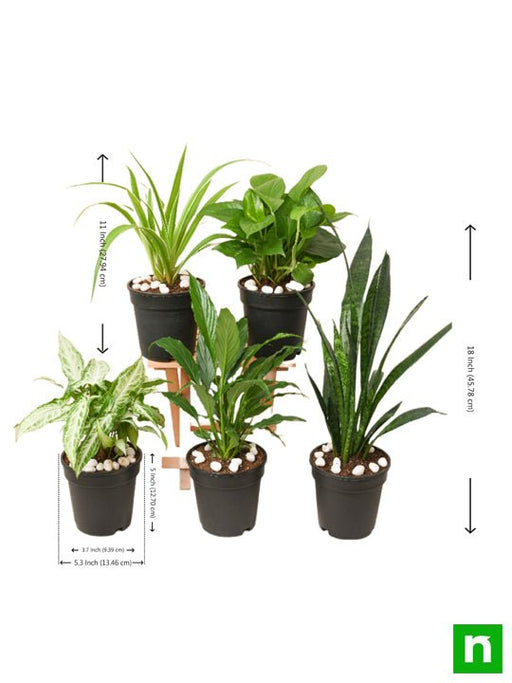
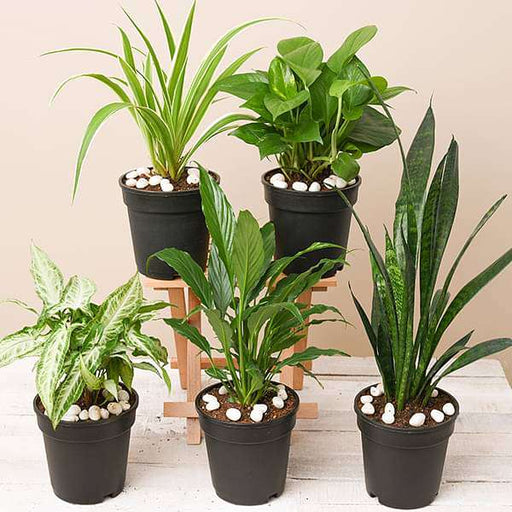 Save 21%
Save 21%
DescriptionThis plants pack contains amazing 5 houseplants + 5 Pots. Surround your home with these best pollution killer plants for a clean and hea...
View full details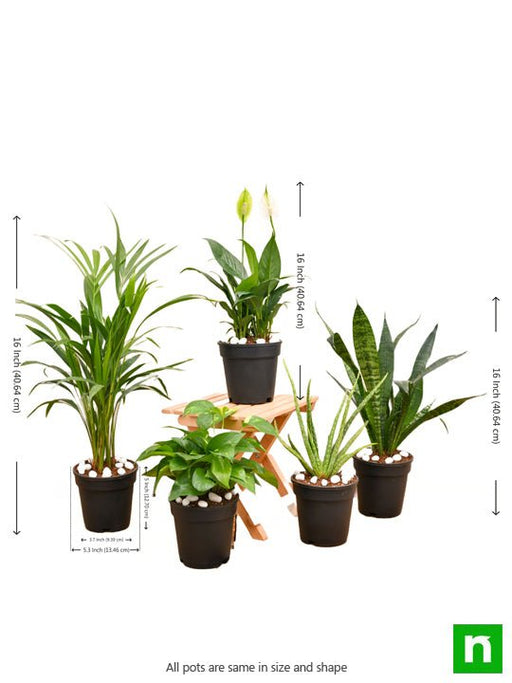
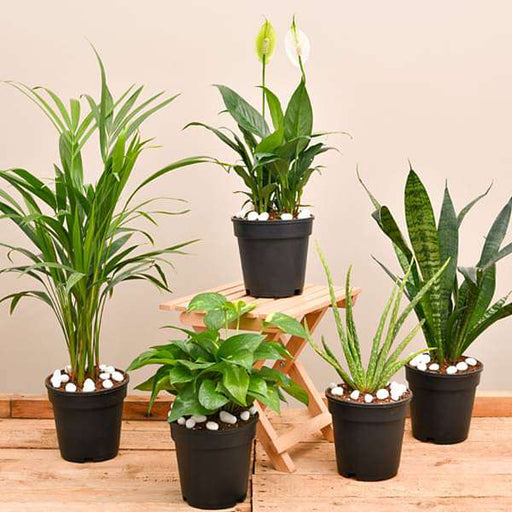 Save 20%
Save 20%
DescriptionIf you or anyone from your family wants to breathe fresh air, cleaner air in their homes, this 5 plants pack purify the air around and r...
View full details
 Save 40%
Save 40%
DescriptionSet of 2 Bonsai Looking Grafted Adenium PlantsAbout You get 2 Bonsai looking hardy grafted Adenium plants in a single pack.Plants are k...
View full details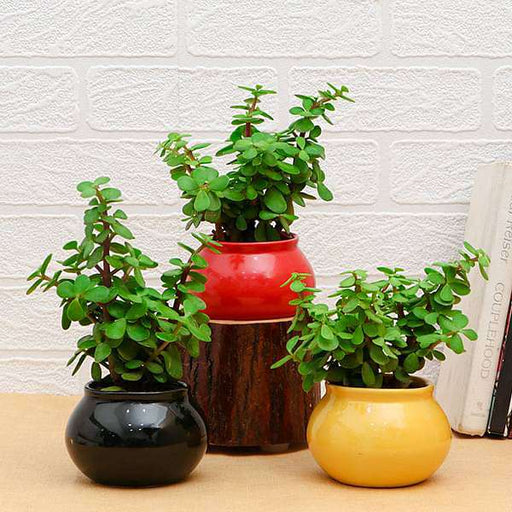 Save 22%
Save 22%
DescriptionThe Jade plant is an extremely popular succulent houseplant with fleshy leaves. According to popular belief, these plants will bring goo...
View full detailsAglaonema also termed as “Chinese Evergreen,” is a species of flowering plants that belongs to the family Araceae. Perennial herbaceous plants chiefly found in the tropical and subtropical areas of Asia, New Guinea, and the Philippines, the stems of Aglaonema Plants grow erect, flat, or crawl along the ground. There is commonly a crown of wide leaf edges, which are frequently mixed with silver and green tinge in wild species.
Uses of Aglaonema Plants
Aglaonema plants tend to be low-developing plants that slowly uncover their trunks. NASA has listed this gorgeous leafy plant among the top ten plants that cleanse pollutants present in the air. Commonly called Aglaonema anyamanee and Aglaonema dud anyamanee, it is a low maintenance plant.
The leaves of Aglaonema plants purify the air by absorbing harmful substances such as formaldehyde, carbon monoxide, and benzene. Moreover, the leaves transmit oxygen, which expands efficiency and improves well-being and prosperity both in living and working spaces. They are also believed to bring luck in the areas they are planted.
Maintenance of Aglaonema Plants
A great indoor plant for low light regions with stunning designer leaves, Aglaonema Plants are known as an ornamental plant because of its spear-shaped leaves. It is a user- friendly plant that requires just a reasonable measure of water and low lighting conditions.
Easy to grow, Aglaonema plants can be kept in AC offices and rooms to receive bright artificial to indirect natural light.
NurseryLive brings you a variety of Aglaonema plants ranging from dull green to silver and some with red traces. You get a round black plastic grower pot about 13 cm (5 inches) in size. Check out the instruction guide to know more about growing this plant with sunlight, soil, water, fertilizer, and repotting.
Aglaonema is a genus of flowering plants in the family Araceae. There are over 20 different species of Aglaonema, each with its own unique characteristics. Some popular varieties include Aglaonema Silver Queen, Aglaonema Red Siam, and Aglaonema Maria.
Aglaonema plants are known for their ease of care, making them a popular choice for indoor gardening enthusiasts. To care for your Aglaonema, make sure it receives bright, indirect sunlight and water it when the top inch of soil feels dry.
Propagating Aglaonema plants can be done through stem cuttings or division. Stem cuttings should be taken from a healthy plant and rooted in soil or water. Division involves separating the roots of a mature plant and planting each section separately.
Aglaonema plants prefer well-draining soil that is rich in organic matter. A mixture of peat moss, perlite, and vermiculite is ideal for these plants.
While Aglaonema plants are generally easy to care for, they can be susceptible to pests such as spider mites, mealybugs, and scale insects. Regularly inspect your plant for signs of infestation and treat promptly if necessary.
Aglaonema plants benefit from regular fertilization during the growing season. Use a balanced fertilizer every 2-4 weeks to promote healthy growth.
Pruning Aglaonema plants can help maintain their shape and promote healthy growth. Use sharp, clean pruning shears to remove any dead or damaged leaves and stems.
Aglaonema plants prefer bright, indirect light. Avoid placing them in direct sunlight, as this can burn their leaves.
Aglaonema plants prefer humid environments. You can increase humidity by placing a tray of water near the plant or by using a humidifier.
Aglaonema plants prefer temperatures between 65-80°F (18-27°C). Avoid placing them near cold drafts or hot air vents.
Aglaonema plants are toxic to cats and dogs if ingested. Keep them out of reach of pets and children.
Aglaonema plants come in a variety of colors, including green, silver, red, and pink. Some varieties even have variegated leaves.
Aglaonema plants are native to tropical and subtropical regions of Asia, including China, India, and the Philippines.
Aglaonema plants can range in size from small tabletop plants to large floor plants. Choose a size that fits your space and needs.
Aglaonema plants prefer moist soil but can be susceptible to root rot if overwatered. Water when the top inch of soil feels dry and avoid letting the plant sit in standing water.
Aglaonema plants can produce small, white flowers in the right conditions. However, they are primarily grown for their attractive foliage.
Aglaonema plants come in a variety of leaf patterns, including speckled, striped, and variegated. Some popular patterned varieties include Aglaonema Pink Dalmatian, Aglaonema Snow White, and Aglaonema Maria Christina.
Pruning can also be used as a method of propagation for Aglaonema plants. By taking stem cuttings and propagating them in water or soil, you can create new plants and expand your collection.
Aglaonema plants should be repotted every 1-2 years to provide fresh soil and room for growth. Choose a pot that is slightly larger than the current one and fill with fresh potting mix.
Aglaonema plants are known for their air-purifying properties, making them a popular choice for indoor spaces. They can remove toxins such as benzene and formaldehyde from the air, improving overall air quality.
Aglaonema plants are a popular indoor plant that come in a variety of colors and patterns.
There are several types of Aglaonema plants, including Aglaonema Silver Bay, Aglaonema Maria, and Aglaonema Siam Aurora.
Aglaonema plants require well-draining soil, regular watering, and a good fertilizer to thrive. They should be planted in a spot that receives bright but indirect sunlight.
Aglaonema plants can be planted any time of the year in India, as they are primarily grown indoors.
Aglaonema plants require regular watering, but they do not like to be waterlogged. Water them deeply once or twice a week, depending on the weather conditions.
You can use a balanced, all-purpose fertilizer to feed your Aglaonema plants. Apply it every two weeks during the growing season.
Yes, Aglaonema plants can tolerate low light conditions, but they require bright but indirect sunlight to thrive.
Prune your Aglaonema plants regularly by removing any dead or damaged leaves and stems.
Aglaonema plants can be propagated through stem cuttings or division. Cuttings should be planted in well-draining soil and kept moist until they root.
To prevent pests and diseases on your Aglaonema plants, make sure to keep the soil moist but not waterlogged, and avoid overcrowding the plants. Use organic pesticides if necessary.
Aglaonema plants can live for several years if provided with proper care and maintenance.
Aglaonema plants can be kept indoors year-round, as they prefer warm and humid conditions.
No, Aglaonema plants do not like direct sunlight, as it can burn their leaves.
Aglaonema plant cuttings should be planted in well-draining soil and kept moist until they root. They can then be transplanted into their permanent pot or garden bed.
No, Aglaonema plants are primarily grown indoors as they do not tolerate direct sunlight or extreme temperatures.
To control pests on your Aglaonema plants, use organic pesticides and insecticidal soap. You can also manually remove any pests you see on the plant.
Yellowing leaves on Aglaonema plants can be a sign of overwatering or nutrient deficiencies. Check the soil moisture levels and fertilize the plant as needed.
Wilting Aglaonema plants can be revived by watering them deeply and placing them in a shaded area for a few hours. If the problem persists, check the soil moisture levels and adjust your watering schedule.
Aglaonema plants require high humidity to thrive. You can increase humidity levels by placing a humidifier near the plant or by placing a tray of water near it.
Yes, Aglaonema plants can be grown in hydroponics, as long as they receive adequate nutrition and water.
Brown tips on Aglaonema plants can be a sign of over-fertilization or too much sunlight. Adjust your fertilizer and watering schedule accordingly.
When choosing an Aglaonema plant, consider the color and pattern of the leaves, and make sure it is healthy and free from pests or diseases. Additionally, choose a spot in your home that receives bright but indirect sunlight.
To protect your Aglaonema plants from pests like spider mites and mealybugs, use insecticidal soap or neem oil. You can also manually remove them with a damp cloth or cotton swab.
Yes, Aglaonema plants can be grown in terrariums, as long as they have adequate space and are not overcrowded.
To prevent root rot in your Aglaonema plants, make sure to provide them with well-draining soil and avoid overwatering them.
Transplant your Aglaonema plants by carefully removing them from their current pot and replanting them in a larger pot with fresh soil.
Make your Aglaonema plants bushier by pruning them regularly and providing them with adequate nutrition and water.
Inspect your Aglaonema plants for pests or signs of disease before bringing them home, and make sure to purchase them from a reputable nursery or garden center.
To ensure your Aglaonema plants are not overwatered, allow the soil to dry out slightly between watering, and avoid waterlogging the plant.
Yes, Aglaonema plants have air-purifying properties and can help remove toxins from the air. They are particularly effective at removing formaldehyde and benzene.